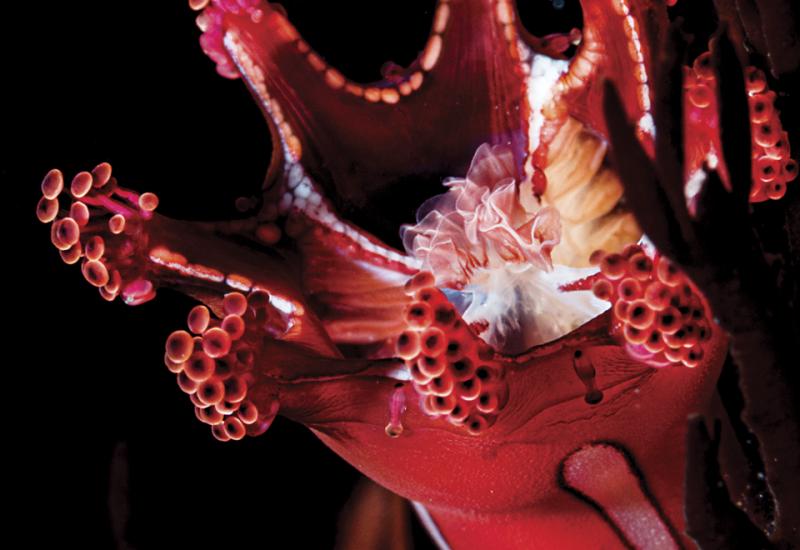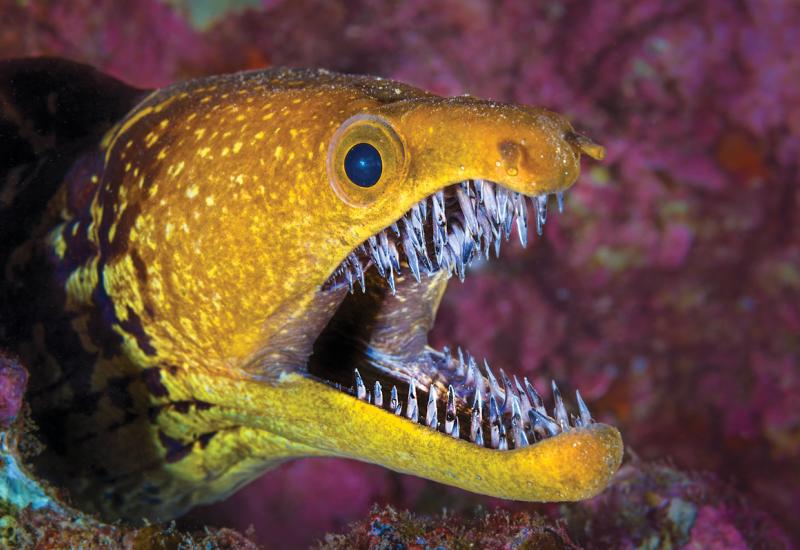Freediving with Blue and Mako Sharks in Rhode Island
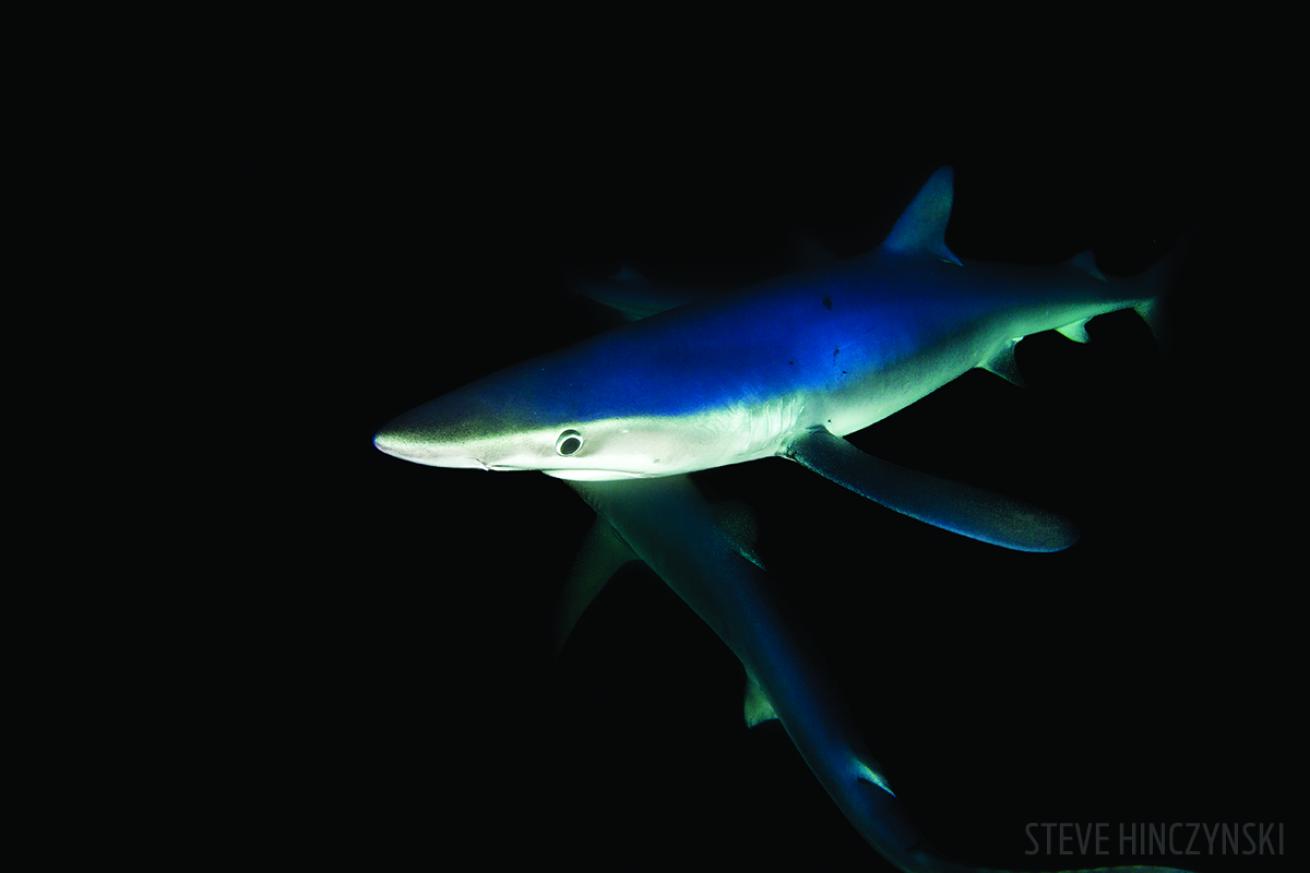
Steve HinczynskiLike magic, blue sharks appear and vanish in the nighttime waters off Rhode Island.
When you say “shark diving,” most people think of a tropical destination. But I’ve had the privilege of swimming with a lot of different species of sharks, and the place that finds its way onto my schedule every year is Rhode Island. Blue and mako sharks start arriving midsummer, and that’s what I go to see.
Rhode Island has always been a fishing state. If you wanted to go deep-sea fishing, you caught something, killed it and mounted it on your wall. But times are changing — in my opinion, for the better. A live shark has multiple returns for not only eco-tourism but also, more important, for the health of the oceans.
This would be my third year heading back to photograph blue sharks and hopefully a mako. I usually plan on three single-day trips — maybe it’s the shark junkie in me, or maybe to increase my odds — however this year the guys from Pelagic Expeditions had planned something a little more adventurous. Under the full moon, we would dive with the sharks at night.
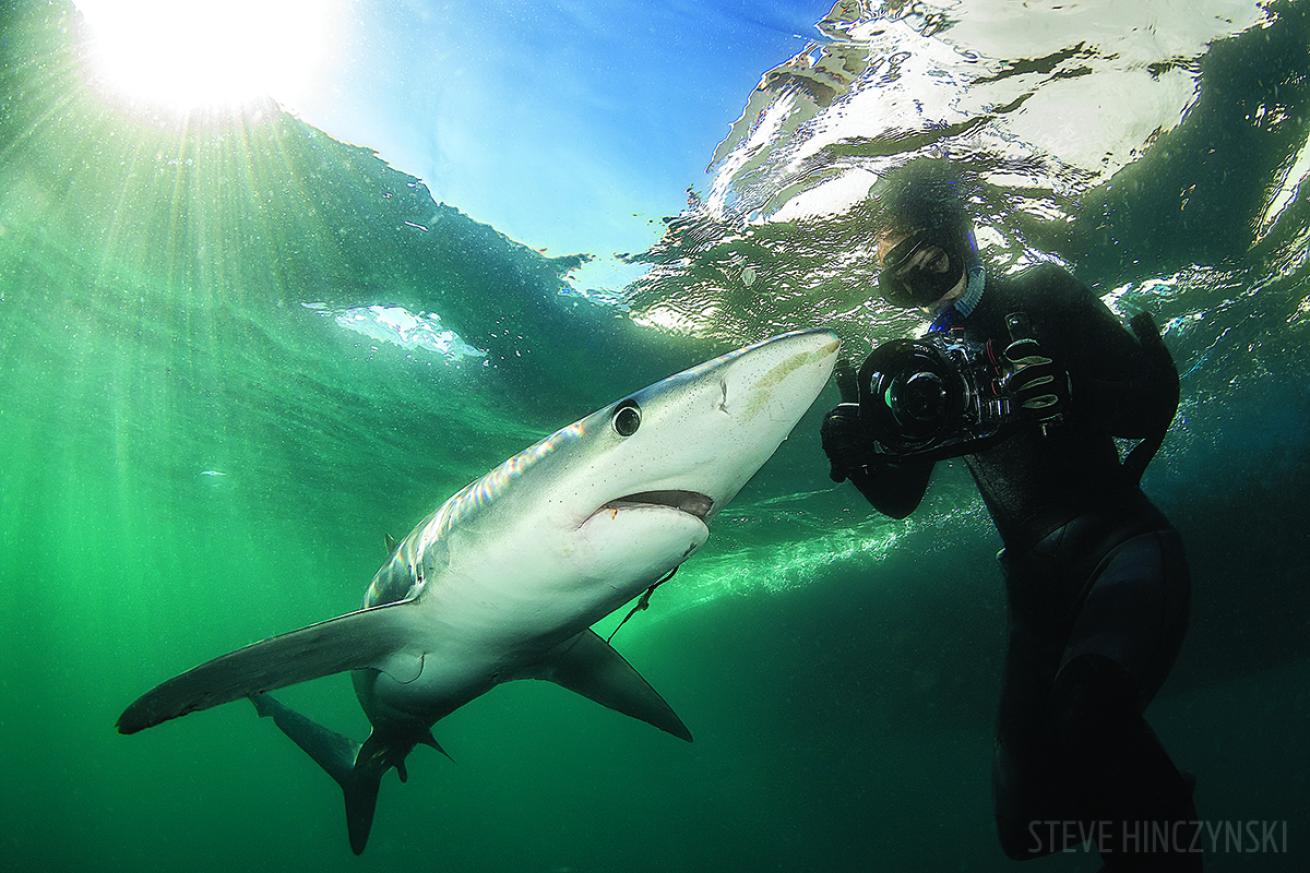
Steve HinczynskiDiver attempts to photograph mako sharks off Rhode Island.
US, AND THE SHARKS
Pelagic Expeditions runs cageless, open-water diving encounters — freediving, not scuba diving. So it’s literally us in wetsuits, and the sharks.
We leave the marina early for the 30-mile trek out into the Atlantic. Along the way, common dolphins often flank our boat and give chase as they play in the bow wake. Cameras are grabbed and everyone heads for the rail as the dolphins streak through the water.
Two hours later the captain shuts the engines, and we begin drifting with the tide. A chum bucket is hung over the side to let the sharks know we’re here. Seabirds are the first to find us. Stormy petrels dance on the slick, sipping the oil off the water’s surface, as shearwaters fl oat, looking for a chance to gobble pieces of bait. Less than 30 minutes have passed when the first shark finds the boat. Shortly after, a second shark arrives on the scene. After allowing the sharks time to get comfortable, the words are spoken: “Gear up and get ready. It’s time.”
I’m told to get in first and test the sharks. More than likely, we’re the first humans any of these sharks have encountered, or at least encountered in the water — I seem to see more and more sharks sporting hooks these days, although I suppose a live shark with an embedded hook is better than a dead shark at the marina.
The first person in the water never knows for sure what awaits. You need to be able to judge quickly whether you have a “good” shark — a player — or a shark that doesn’t want you in its space, in which case you need to leave the water. In most cases, as long as you follow the rules — make eye contact, but keep at least an arm’s length between yourself and the shark — encounters are positive for all, including the sharks. Break the rules, and the trip can be over quickly.
I slide into the water from the swim platform, trying to make as little commotion as possible, and cautiously swim around to the side of the boat. I’m continually scanning the water, waiting for the first encounter. As I settle in alongside the boat, a silhouette emerges from the jade-green water: a 7-foot blue, coming in to check me out.
Blue sharks are great for in-water encounters. Once they’re comfortable with the boat and divers, they become very curious and come in close. With their big eyes, it’s easy to see them looking you over. This blue has made a couple of passes by me, and now a second has begun investigating me. Both sharks seem very comfortable with my presence and are starting to keep me pretty busy with lots of close-up shooting. Another diver is released into the water and joins me alongside the boat. Blues are actively coming in and giving us some great action. A third diver joins, and the guys are doing a great job on the boat, keeping the sharks in front of us. Two more blues join the party.
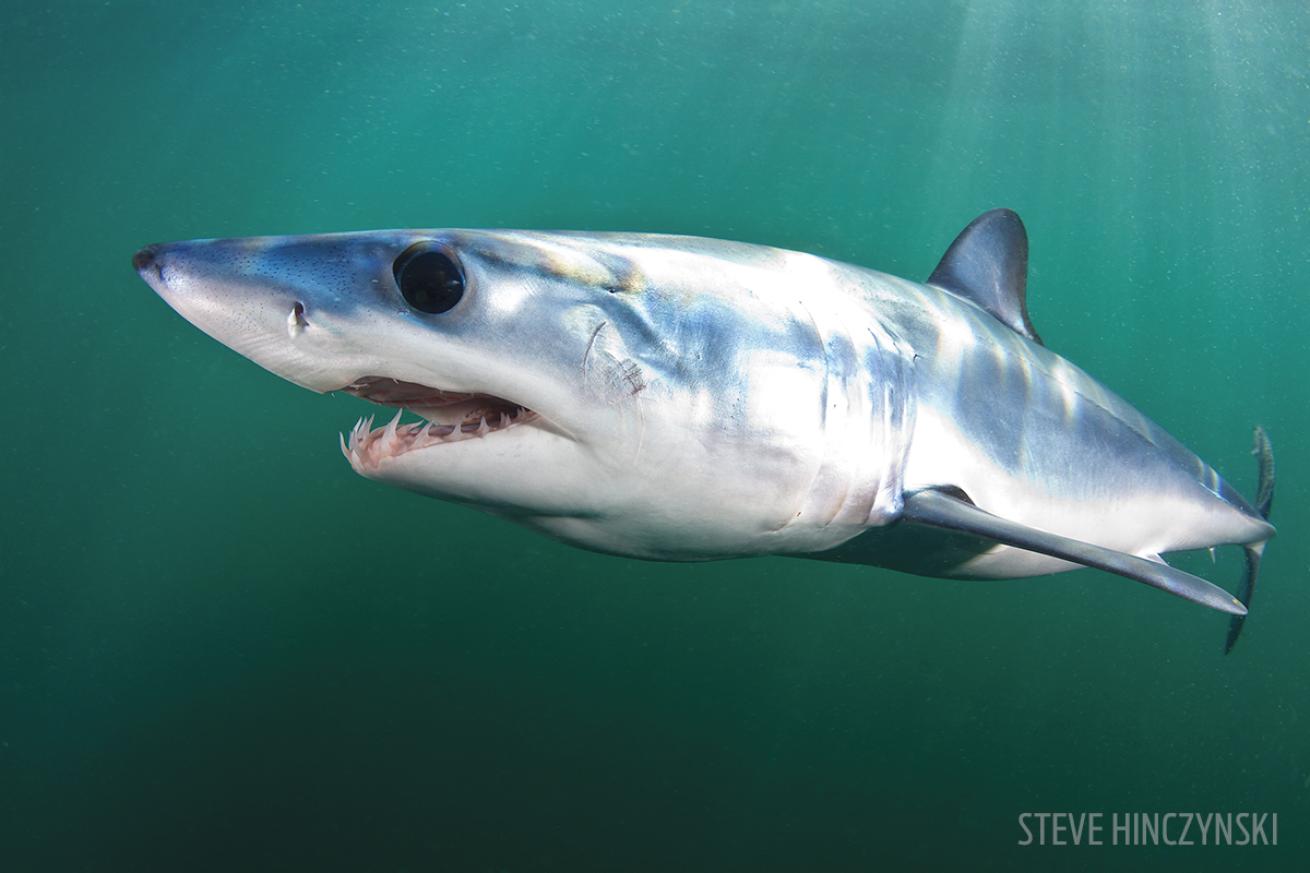
Steve HinczynskiHow does author and photographer Steve Hinczynski describe mako sharks? Like "lightning with teeth."
NOW YOU SEE THEM…
After several rotations in and out of the water, I begin to see golden-white shafts of light cutting into the water. The sun is going down, and the golden hour is upon us. The light fades rapidly, and green water turns black as the last rays fall below the horizon. Our lights cut small paths below us — the sharks are either right in front of you or they aren’t. When they aren’t, we really don’t know where they are.
Things are happening faster than we can react. Time to retreat. With everyone safely on board, the grill is fired up, and hamburgers and hotdogs are served. Cameras soon replace dinner plates on everyone’s laps, and show-and tell begins. With sunrise rapidly heading our way, we pick our spots on the boat to get some sleep. Before we know it, the sun is climbing over the horizon. A fresh bucket of chum is lowered and, before the muffins are finished, the sharks are on scene and we are back in the water. The action is still pretty intense, but at least we can see them coming.
By mid afternoon, everyone is spent — and rightfully so. During our two day expedition, we have encountered 19 different blue sharks and one mako.
Mission accomplished.


